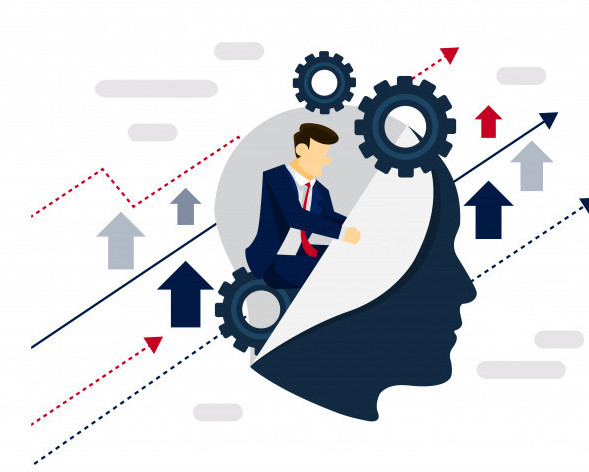THE EFFECTS OF CHANGE: MUSCLE MEMORY AND YOUR EMPLOYEES
By: Dawn-Marie Turner
Summer 2018 Issue
You may have heard the statistics, 50-70% of organizational change initiatives fail. Your organization is facing big changes, and you don’t want to add to that statistic. So, you send your managers and leaders for change management training and adopt a change management methodology. You think you've done your part. This time will be different.
Yet, your employees are still slow to buy in, perhaps even skeptical. They question the training and whether it will really make a difference. Exasperated, you conclude they really are resistant to change. So, you push harder to get the change implemented.
But the problem is not resistance to change. It may be the organizational muscle memory.
What is Muscle Memory?
Several years ago, I decided to learn how to play the piano. I had always wanted to learn. I envisioned sitting at the piano playing some of my favourite music. The reality was much different.
It didn’t take long before I became frustrated. There was no beautiful music coming from my piano. Instead it sounded like unconnected pings on a cell phone. I couldn’t read the notes or find and play the keys, all at the same time. My piano teacher, Mary, was incredibly patient. She simply reminded me that I needed time. I had not yet developed muscle memory.
Muscles don’t have actual memory cells. Muscle memory refers to the embedded learning that occurs as a result of repeated practice or exposure to a situation. If you've ever successfully ridden a bike, driven stick shift, or laced up skates after years away from the activity, that's muscle memory.
Employees have muscle memory too. Especially when it comes to organizational change. An organization’s history with change is its muscle memory. Its history with change has shaped its employees’ beliefs and assumptions about change. The organization’s employees, (including leaders, managers, and other stakeholders), have an embedded and often unconsciously learned response to change.
And this muscle memory is based on how the organization has approached and handled previous changes.
Change history is not just the events and the chronology of those events. It is carried within the human consciousness and shapes emerging future events.
A History of Fear and Distrust
A company's history affects everyone, from the CEO to its frontline employees. If there's a history of failed changes, changes that start and then just stop, or changes that are forcibly pushed through, its people have learned to fear change.
Employees fear the consequences, uncertainty, and loss that comes with change. Leaders and managers fear the conflict, the sense of frustration, and the potential consequences of not being able to move the organization where it needs to go.
Researchers found, in a study exploring openness to change, an organization’s history creates a self-fulfilling prophecy. Organizations with a history of failed or poorly-led changes lead to higher levels of employee cynicism and distrust of executive management. Distrust leads to reluctance to engage with subsequent changes. This continues the cycle of failed changes with employees being labelled as resistant to change.
Breaking the cycle of failed change requires a willingness to create a new history.
Creating a New History of Change
Muscle memory is a powerful tool for retaining learning. It’s also one of the things that can hold people back. Learned responses can make people fear trying new things and cause a repetition of past mistakes. Reshaping that memory takes time. It also takes a commitment to do things differently, and willingness to acknowledge past mistakes.
The first step in overcoming an organization’s history with change and preventing resistance is to acknowledge its existence.
Why Past History is Important
First, it’s easy to forget that previous events shape current events. Second, it’s easy to forget continuities, to ignore aspects of the past that have not changed and are still influencing current thinking.
Companies must ensure leaders have the knowledge, skill, confidence, and authority to lead and facilitate change. In many situations of failed change, the employees agreed with and supported the change. It was the way it was approached and led that caused it to fail.
Research has shown the existing skills that are needed and appropriate for operational or professional roles are not sufficient for managing a change event or situation.
Training Alone is Not Enough
Once trained, leaders need an environment that supports and enables them to integrate the principles and activities into their daily leadership practices. Leaders must stop looking at change management as a task to be completed and start enabling organizational change.
And – practice active patience, which is the patience to allow a change to move at the pace of readiness, while actively engaging and supporting people through the change process. The company's organizational change muscle memory wasn’t created with just one change.
It won’t be re-created with just one change either, but it can be done one change at a time.
Dr. Dawn-Marie Turner is an organizational change specialist, president of Turner Change Management, and author of "Launch Lead Live: The Executive's Guide to Preventing Resistance and Succeeding with Organizational Change." She helps leaders navigate the complexities of organizational change to move it from a liability to an asset. To learn more about Dr. Turner, click here.


